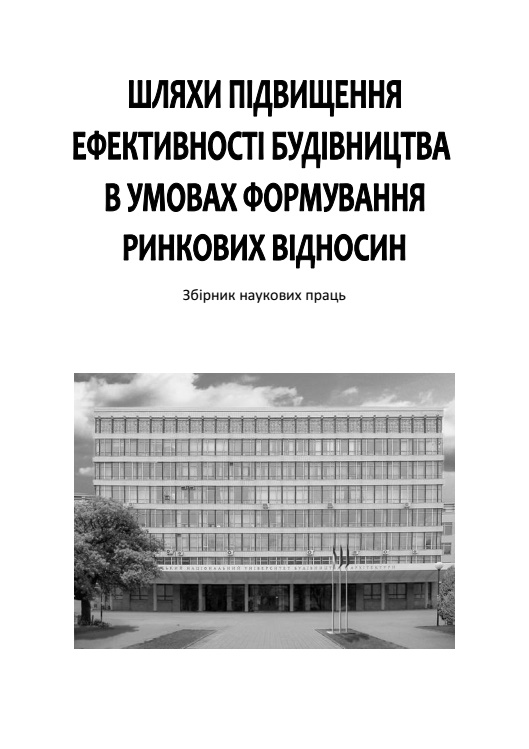Forecasting the level of rehabilitation capacity of the construction company
DOI:
https://doi.org/10.32347/2707-501x.2022.49(1).157-163Keywords:
enterprise reorganization, bankruptcy probability models, enterprise reorganization prevention, enterprise economic security, liquidity, financial stability, solvencyAbstract
Theoretical bases that reveal the concept of enterprise reorganization are substantiated, the causes and consequences of reorganization are determined, the models of calculating the probability of bankruptcy are investigated. The works of leading scientists in the field of research of enterprise rehabilitation are analyzed. The main financial and economic indicators are considered, with the help of which it is possible to predict in advance the financial condition of a construction enterprise and its rehabilitation capacity. Factors that reduce the quality of enterprise management have been identified. Harrington's model is considered as a method of determining the feasibility of rehabilitation investments in a construction company.
The main stages of rehabilitation are determined: organizational and target, formation of a system of indicators, organizational and planning, information, methodological support and restructuring. The peculiarities of each of the presented stages are described. At the organizational and target stage, goals are formed, subjects and objects of management are determined. The most important goals are: identification of the real state of the object; study of the composition and properties of the object, its comparison with known analogues or standards; detection of changes in the state of the object; identification of factors that caused changes in the state of the object. The chosen goals should reflect the specifics of the enterprise. Competitors, management, creditors, insurance bodies, tax authorities, mass media can act as carriers of risk for the problem enterprise.
The main subjects of remediation have been identified. Managers, creditors and owners can act as the basic subjects. However, direct management work is carried out by the economic services of the enterprise. If the internal analysts of enterprises do not have sufficient knowledge and skills, employees from ancillary industries can be involved.
Methods for identifying the probability of bankruptcy of the enterprise by analyzing financial statements and calculating financial indicators are considered. Models of foreign and Ukrainian scientists to calculate the probability of bankruptcy several years before its possible occurrence are analyzed.
References
Боліла Н.В. Формування економіко-управлінського інструментарію антикризової діагностики будівельних підприємств. Шляхи підвищення ефективності будівництва в умовах формування ринкових відносин. 2019. Вип. 42. С. 85-91.
Ельсуков В.П. Антикризисное управление предприятием:[монография] / [В.П. Ельсуков, B.C. Каменков, Б.И. Кононов, А.И. Миронченко]. Мн.:«Аверсэв», 2003. 574 с.
Ермошенко Н.Н., Скворцов Н.Н. Словарь-справочник предпринимателя. К.: УкрИНТЭИ, 2003. 168 с.
Єпіфанова І.М. Банкрутство підприємств: спектр невирішених проблем. Економіка: реалії часу, 2017. № 1(29). С. 55-63. URL: https://economics.opu.ua/files/archive/2017/No1/55.pdf
Загора Т.О. Економічна діагностика: навч. посібник. К.: Центр учбової літератури, 2012. 400с.
Зеліско І.М. Управління фінансовою санацією підприємства: навч. посібник. К.: ЦП «КОМПРИНТ», 2015. 320с.
Ізмайлова К.В., Беленкова О.Ю. Фінансовий аналіз: методичні вказівки до курсової роботи “Аналіз фінансового стану підприємства”. К.: КНУБА, 2018. 61 с.
Bielienkova O., Stetsenko S., Sorokina L., Molodid O., Bolila N. System of preventive аction of construction enterprises on the basis of identification of anticrisis potential. Scientific Journal of Astana IT University. 2020. №3. 15-27.
Tytok V., Bolila N., Ryzhakov D., Pokolenko V., Fedun I. CALS–technology as a basis of creating modules for assessment of construction products quality, regulation of organizational, technological and business processes of stakeholders of construction industry under the conditions of cyclical and seasonal variations. International Journal of Advanced Trends in Computer Science and Engineering. 2021. №1. 271-276.
Stetsenko S., Bolila N., Sorokina L., Tsyfra T., Molodid O. Monitoring mechanism of resilience of the anti-crisis potential system of the construction enterprise in the long-term period. Еconomics, finance and management review. 2020. №3. 31-42.
Stetsenko, S.P., Tytok, V.V., Emelianova, O.M., Bielienkova, O.Yu and Tsyfra T.Yu. Management of Adaptation of Organizational and Economic Mechanisms of Construction to Increasing Impact of Digital Technologies on the National Economy. Journal of Reviews on Global Economic. 2020. №9, рр.149-164.
Бєлєнкова О.Ю., Титок В.В. Формування конкуренції на ринках первинної нерухомості: теоретичні передумови, моделі, чинники. Шляхи підвищення ефективності будівництва в умовах формування ринкових відносин. 2020. № 44. С. 147–164.
Кіщенко Т.Є. Інвестиційна криза: причини і шляхи подолання. Шляхи підвищення ефективності будівництва в умовах формування ринкових відносин. 2020. № 46. С. 72-78.
Стеценко С.П., Боліла Н.В., Моголівець А.А., Гаврилюк В.Я. Статистико-аналітичний аспект розвитку будівельної галузі. Шляхи підвищення ефективності будівництва в умовах формування ринкових відносин. 2020. № 46. С. 188-196.
Цифра Т.Ю., Локтіонова Я.Ф., Костенко Н.А. Бюджетування як інструмент планування і управління господарською діяльністю підприємства. Шляхи підвищення ефективності будівництва в умовах формування ринкових відносин. 2020. № 46. С. 24-31.
Downloads
Published
How to Cite
Issue
Section
License

This work is licensed under a Creative Commons Attribution 4.0 International License.
Authors who publish with this journal agree to the following terms:
- Authors retain copyright and grant the journal right of first publication with the work simultaneously licensed under a Creative Commons Attribution License that allows others to share the work with an acknowledgement of the work's authorship and initial publication in this journal.
- Authors are able to enter into separate, additional contractual arrangements for the non-exclusive distribution of the journal's published version of the work (e.g., post it to an institutional repository or publish it in a book), with an acknowledgement of its initial publication in this journal.
- Authors are permitted and encouraged to post their work online (e.g., in institutional repositories or on their website) prior to and during the submission process, as it can lead to productive exchanges, as well as earlier and greater citation of published work (See The Effect of Open Access).

